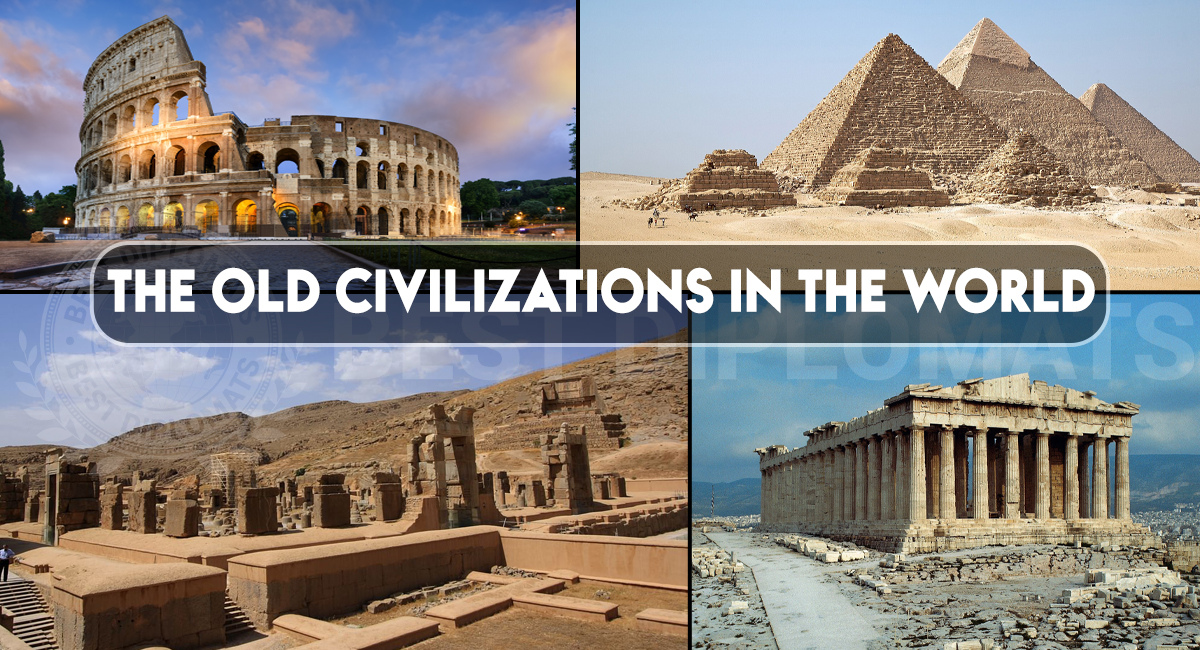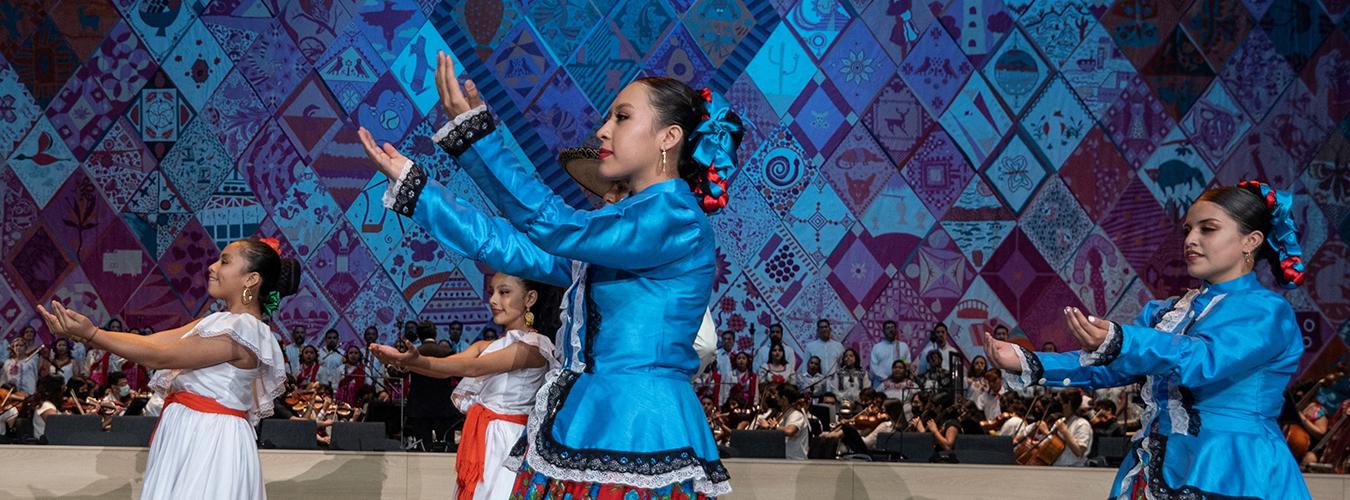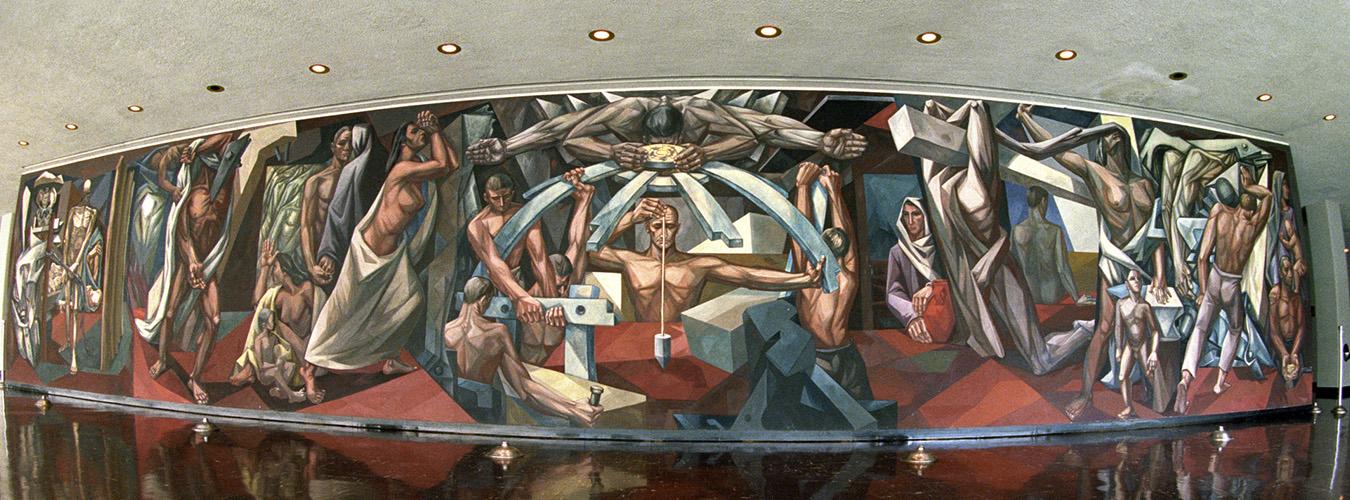Arshad Mahmood Awan
The oldest civilizations, like Mesopotamia, Indus Valley, China and Egypt, are significant because they laid the groundwork for all future advancements. These societies developed the first writing systems, which allowed for the recording and transmission of knowledge. They pioneered urban planning, agriculture, mathematics, and astronomy, laying the foundation for the complex societies that followed. Their inventions and social structures continue to influence us today, making them a vital link in the long chain of human progress. Following is the introduction of the four ancient civilizations of the world.
The Cradle of Civilization: Mesopotamia (4000-3500 B.C.)
Nestled between the Tigris and Euphrates rivers in the region encompassing modern-day Iraq, Kuwait, and Syria, Mesopotamia blossomed as the cradle of civilization. Despite being embroiled in frequent warfare, this region witnessed a remarkable human achievement flourishing. The Sumerians, the founders of Mesopotamia, are credited with developing the world’s first writing system, cuneiform. This revolutionary invention allowed them to record their advancements in law, most notably the famous Code of Hammurabi, one of the earliest known sets of codified laws. Mesopotamian scholars made significant contributions to the fields of astronomy, agriculture, mathematics, and architecture. Their architectural prowess is evident in the establishment of the world’s first cities, including Babylon, Ashur, and Akkad, which served as centres of commerce, culture, and political power.
The Land of the Pharaohs: Ancient Egypt (3100 B.C.)
Perhaps the most captivating of the ancient civilizations, Egypt thrived along the life-giving Nile River for over three millennia. Spanning a vast territory stretching from present-day Syria to Sudan, this civilization is renowned for its awe-inspiring pyramids, elaborate tombs, and the unique practice of mummification, all testament to their belief in the afterlife. The Egyptians were not just skilled builders but also possessed remarkable expertise in agriculture and medicine. Their ability to organize and mobilize vast labour forces remains unmatched, as evidenced by the construction of the colossal pyramids. They also developed a complex writing system known as hieroglyphics and a sophisticated calendar based on the 24-hour day and the 365-day year. Although conquered by Alexander the Great in 332 B.C., Egypt’s rich legacy continues to capture our imagination and inspire us today.
The Peaceful Planners: Indus Valley Civilization (3300 B.C.)
Flourishing in the Indus River Valley (encompassing modern-day Pakistan, India, and Afghanistan), the Indus Valley Civilization stands out for its peaceful and meticulously planned cities. Unlike its contemporaries, there is no archaeological evidence of warfare within this civilization. Instead, their settlements displayed a remarkable degree of urban planning. Houses were constructed from uniform baked bricks arranged in a well-designed grid pattern. The Indus Valley people also boasted advanced drainage, sewage, and water supply systems, demonstrating their commitment to sanitation and public health. The reasons for the decline of this civilization around 1700 B.C. remain a subject of debate, with theories ranging from climate change and tectonic movements to a devastating flood.
The Land of Invention: Ancient China (2000 B.C.)
Shielded by natural wonders like the Himalayas, the Pacific Ocean, and the Gobi Desert, ancient China flourished between the Yellow and Yangtze Rivers. This geographical isolation fostered the development of a unique and enduring culture. To defend themselves from invaders from the north, the Chinese constructed early fortifications, which can be seen as precursors to the Great Wall of China. Ruled by a succession of emperors, China is credited with groundbreaking inventions that have had a lasting impact on humanity. These include the decimal system, the abacus, the sundial, and, most significantly, the printing press. The invention of the printing press revolutionized communication and knowledge dissemination, enabling the widespread circulation of Sun Tzu’s “The Art of War,” a military treatise that remains relevant even today. The Chinese also excelled at large-scale infrastructure projects, exemplified by the Grand Canal, a marvel of engineering that facilitated the movement of goods and military forces across the vast expanse of the country.
The remains of ancient civilizations are more than just dusty relics; they are tangible connections to our past. Preserving these remnants is crucial for several reasons. They act as windows into bygone eras, offering invaluable insights into human history, culture, and ingenuity.
Firstly, by studying the physical remnants of these civilizations, archaeologists and historians can reconstruct the past in a way that written records alone cannot. Ancient cities, artifacts, and even skeletal remains provide a wealth of information about daily life, social structures, technology, and belief systems. For example, the well-preserved cities of the Indus Valley Civilization with their uniform baked-brick houses and advanced drainage systems reveal a peaceful and well-organized society. Similarly, the elaborate tombs of ancient Egypt not only showcase their architectural prowess but also shed light on their religious beliefs and practices surrounding the afterlife.
Secondly, studying these remains allows us to understand the trajectory of human progress. By tracing the development of tools, technologies, and social structures across different civilizations, we gain a deeper appreciation for the advancements that have shaped our world. For instance, the Mesopotamian invention of cuneiform script, the world’s first writing system, paved the way for the development of countless languages and communication systems we use today. Similarly, the engineering feats of the ancient Chinese, like the Grand Canal, inspire us with their ingenuity and ability to manage large-scale projects.
Finally, preserving the remains of ancient civilizations fosters a sense of cultural identity and heritage. These tangible links to the past connect us to our ancestors and provide a sense of belonging to a larger story. Understanding the struggles, triumphs, and innovations of those who came before us allows us to appreciate our own achievements and challenges in a broader context. Furthermore, these sites can serve as powerful tourist destinations, fostering cultural exchange and appreciation for the diversity of human experience across time.
Therefore, preserving the remains of ancient civilizations is more than just about safeguarding old stones and artifacts. It’s about safeguarding the very essence of our history, understanding the path we have travelled as a species, and appreciating the ingenuity and legacy of those who came before us. These remnants serve as a bridge between the past and present, reminding us of where we came from and inspiring us as we forge our way forward.
Please, subscribe to the YouTube channel of republicpolicy.com
















































